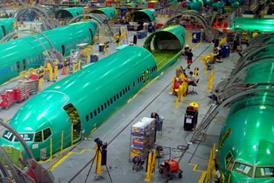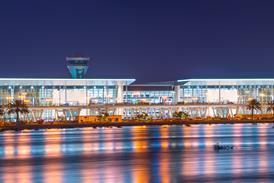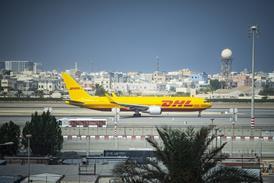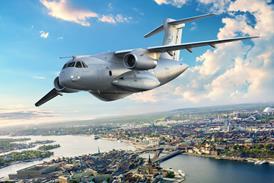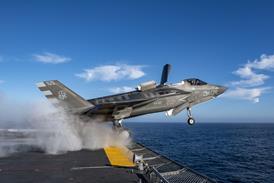Flight and cabin crew may soon have the sort of internet connectivity that ground-based workers take for granted in their offices, thanks to antennae and equipment miniaturisation by Thrane & Thrane.
The Danish communications systems maker, which is being acquired by Cobham through a share offer that values the company at $432 million, believes its system overcomes cost, weight and even aerodynamic drag issues to allow airlines to offer their staff satellite phone calls and "office-in-the-sky" internet access, even if the cost equation keeps passengers largely cut off while in flight.
Versions of the Aviator system have been installed on 600 aircraft, but Thrane & Thrane believes the latest version has advanced far enough that it is now possible to move beyond this base of government, military and business aircraft.
As company founder and chief technology officer Lars Thrane puts it, onboard internet access hinges on whether operators can balance equipment installation and running costs against revenue. But technically, unless satellite equipment is installed even phone connections are limited, because lines have to be typically established on high-frequency radio and then "phone-patched" by the ground station to the landline network.
Thrane & Thrane's focus has been to slash the size of the aeronautical transmission equipment to facilitate voice and internet protocol (IP) data links. While the Inmarsat-based system will not provide enough bandwidth for data-intensive in-flight entertainment (IFE) options, such as video on demand, on large passenger aircraft, it provides sufficient capacity for satellite phone calls and office-in-the-sky internet access, says Lars Thrane.
The equipment's advantage lies in its small antenna. Systems capable of handling large data volumes for IFE require large antennae, which not only add weight but also increase drag. Thrane's Aviator system uses a small aerial, which sits in the fuselage's boundary layer and has little impact on fuel efficiency.
With the reduction in the equipment size, the engineers were also able to slash weight, electricity consumption and avoid the need for component cooling. Acquisition and installation costs have been reduced by 30-50% compared with previous system generations, says aeronautical business unit vice-president Kim Gram.
The key challenge is to convince airlines to invest in the system at a time of severe cost pressure. But Thrane & Thrane argues that having an IP data link and phone connection on board will create cost savings through operational efficiencies.
Pilots, for example, must currently communicate with their operations departments via text messages on the aircraft communications addressing and reporting system (ACARS). But this regime is cumbersome, time-consuming and can even be dangerous during unforeseen situations such as diversions, when workload is high and an unusual amount of communication with head office is needed. Equipment that allows a phone call, or an email from the electronic flight bag (EFB), could be attractive.
Under normal conditions, the main advantage for flightcrew would be to have online access throughout the flight. This would allow continuous update of data, such as weather information, charts, flight documentation and navigational databases, that can normally be uploaded only when the aircraft is on the ground.
Another advantage, and likely cost-saver, is that operators could hand their crews off-the-shelf hardware such as tablet computers - instead of employing purpose-made EFB equipment - and keep the system up to date with new software applications.
At cruising altitude when workload is low, crews could also save time by preparing for the next flight. Navigation logs, fuel calculations, load sheets and flightplans could be uploaded and prepared for the next sector to use the turnaround time at the destination as efficiently as possible.
Mandatory aeronautical documentation, such as weather data, may still need to be carried in paper copies on board, but Thrane is sure that regulators will eventually accept the information in digital format. Critical steps to such acceptance will be to secure the operator's databases and IT network, and to ensure a safe connection with the aircraft.
Source: Flight International

